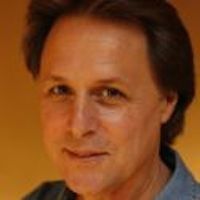Our family moved to San Diego in 1983.
It was a big move both geographically and spiritually. I’d spent the previous decade cycling through a variety of jobs —from short order cook to illustrator/publisher of greeting cards. Mostly, I had been self-employed or, as we liked to say, self-un-employed.
I was ready for a change.
I wanted to work for a corporation.
I was fascinated by the emerging literature on leadership and spirituality, and wanted to become a leadership development consultant; to get a real job in Corporate America. Wow! I’d barely set foot inside a corporation before much less worked for one.
I identified myself as a creative, free spirit.
After all, I reasoned, look at my history: hippie, yogi, artist, making my way in the world through a variety of self-created ventures. It all added up to a sense of self that was identified with the pattern: I am a creative, free spirit.
And then I got hired by the largest employer in town.
In those days, the San Diego economy was dominated by a few large corporations that built stuff and provided services to the Navy & Marines. I was hired by General Dynamics, the biggest of the big players in the military-industrial economy of San Diego.
The move from the world of hippie-dom to the military-industrial complex was a shock to my system.
I found myself surrounded by people who were fixated on something I’d never thought about—retirement. They talked about how many years, months, weeks and days remained until they would retire. They talked about their savings plans, their nest eggs and the “number” which was their financial goal. They seemed to be totally focused on security and safety. I didn’t get it.
I couldn’t relate to their fixation on safety and security.
I looked down on them for being so obsessed with their financial future that they were compromising their experience in the present. Their emphasis on safety and security, it seemed to me, locked them in a prison of conformity and stifled their aliveness.
What I couldn’t see was how I was fixated on both what I was identified with and what I was dis-identified from.
My conditioned self was composed of both what I identified with—the creative, free spirit—and what I was dis-identified from—the security seeking conformist.
My conditioned self, like all conditioned selves, included both what I believed myself to be and what I believed myself not-to-be.
To free consciousness from the pattern of conditioning requires two complementary practices.
One is the practice of releasing consciousness from the patterns of self-identification.
The other is the practice of welcoming and embracing the patterns of not-self into the resonance of the heart.
Releasing and transcending on the one hand. Welcoming and embracing on the other. Both are beautiful and either can be limiting.
How does practice become limiting?
Either practice can become a way of defending against that which you do not wish to face.
Over-emphasizing releasing/transcending can distance you from life and blind you to the unconscious patterns that you are dis-identified from—even as they shape your thoughts, speech, action.
Over-emphasizing welcoming/embracing can submerge you in a pattern of living, blind you to the limits of that pattern and how it shapes your thoughts, speech, action.
What about you? Which of these practices do you prefer?
Are you more comfortable releasing or embracing?
Are you attracted to practices and teachings that emphasize letting go, dis-identifying, and moving beyond?
What have you discovered about the strengths and limits of this approach?
Do you gravitate towards practices and teachings of embracing, including, and inviting in?
What have you discovered about the strengths and limits of this approach?
Share your wisdom in the comments below.
Like elephant spirituality on Facebook.
Ed: Sara Crolick


Read 0 comments and reply